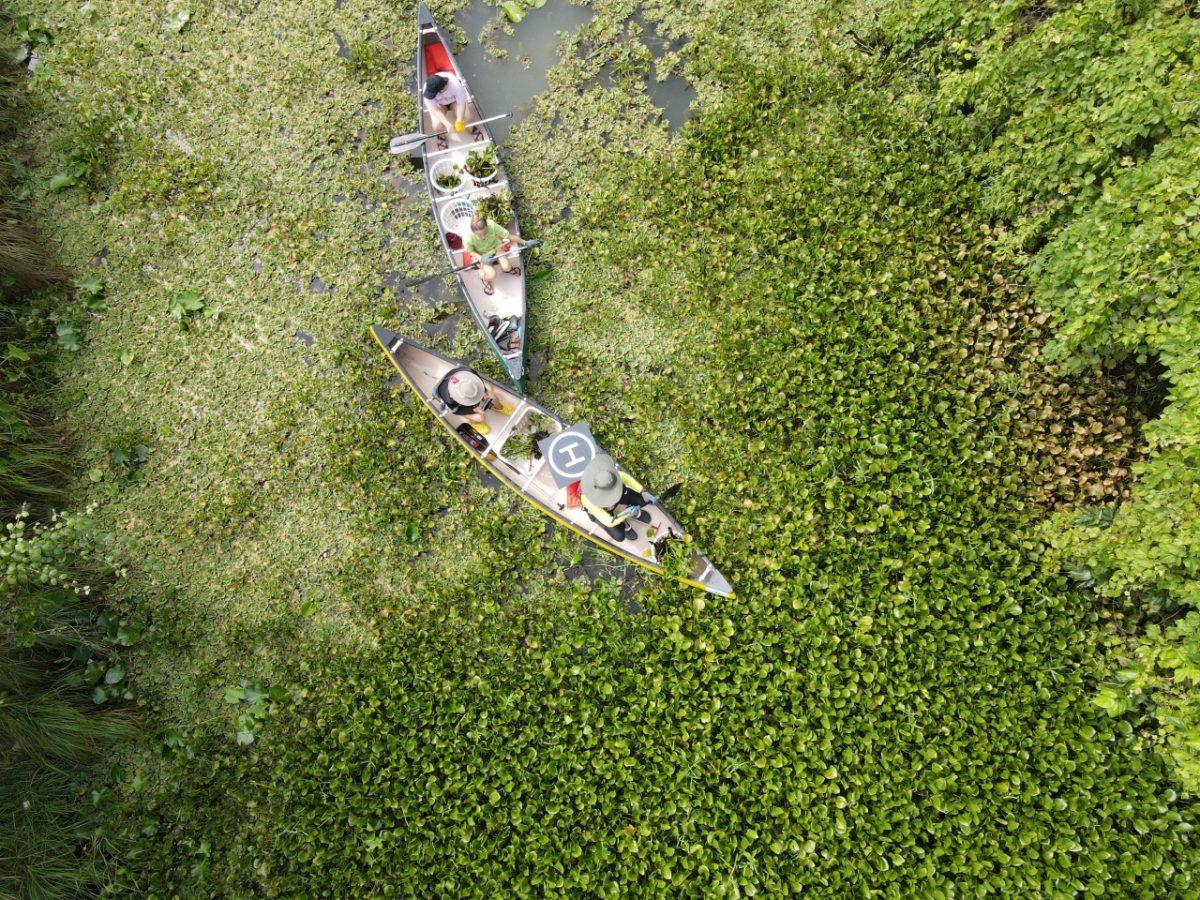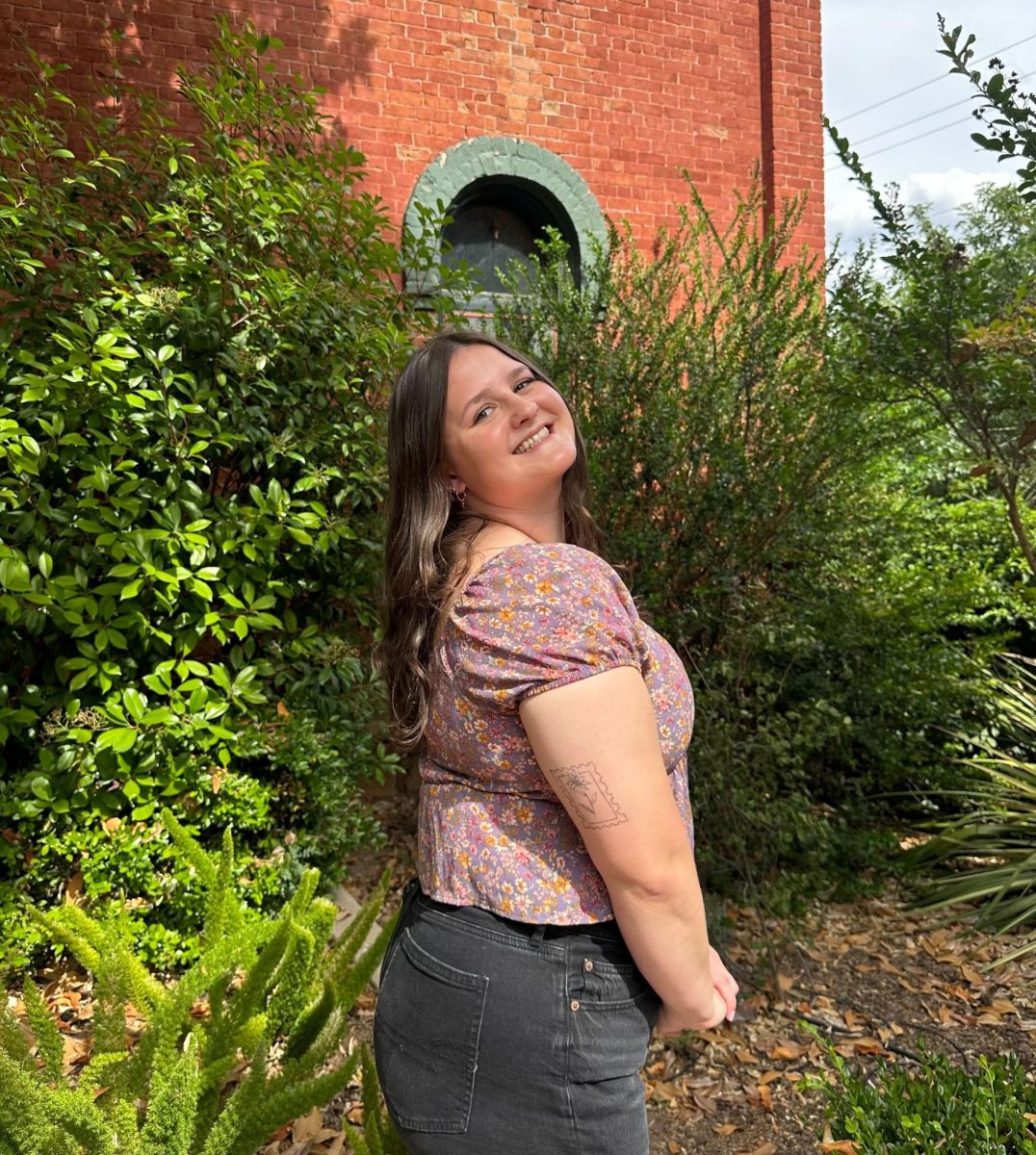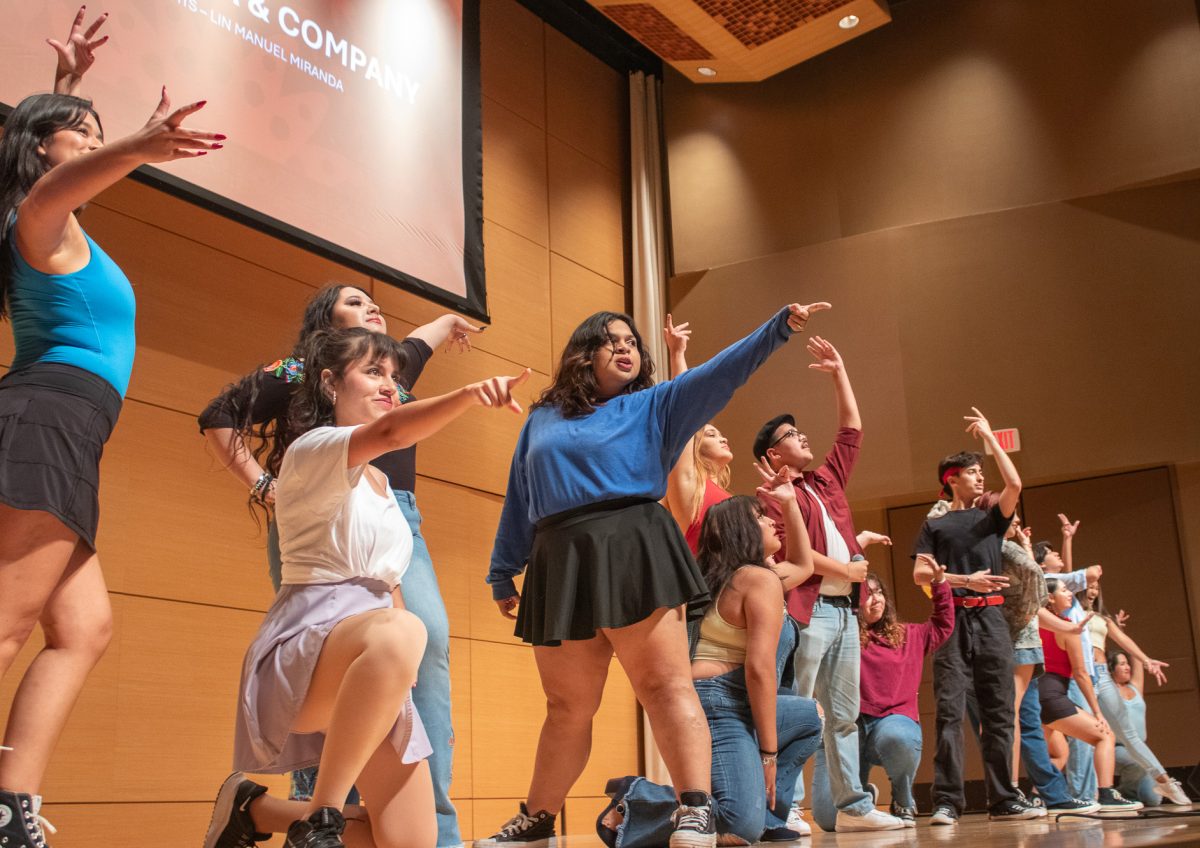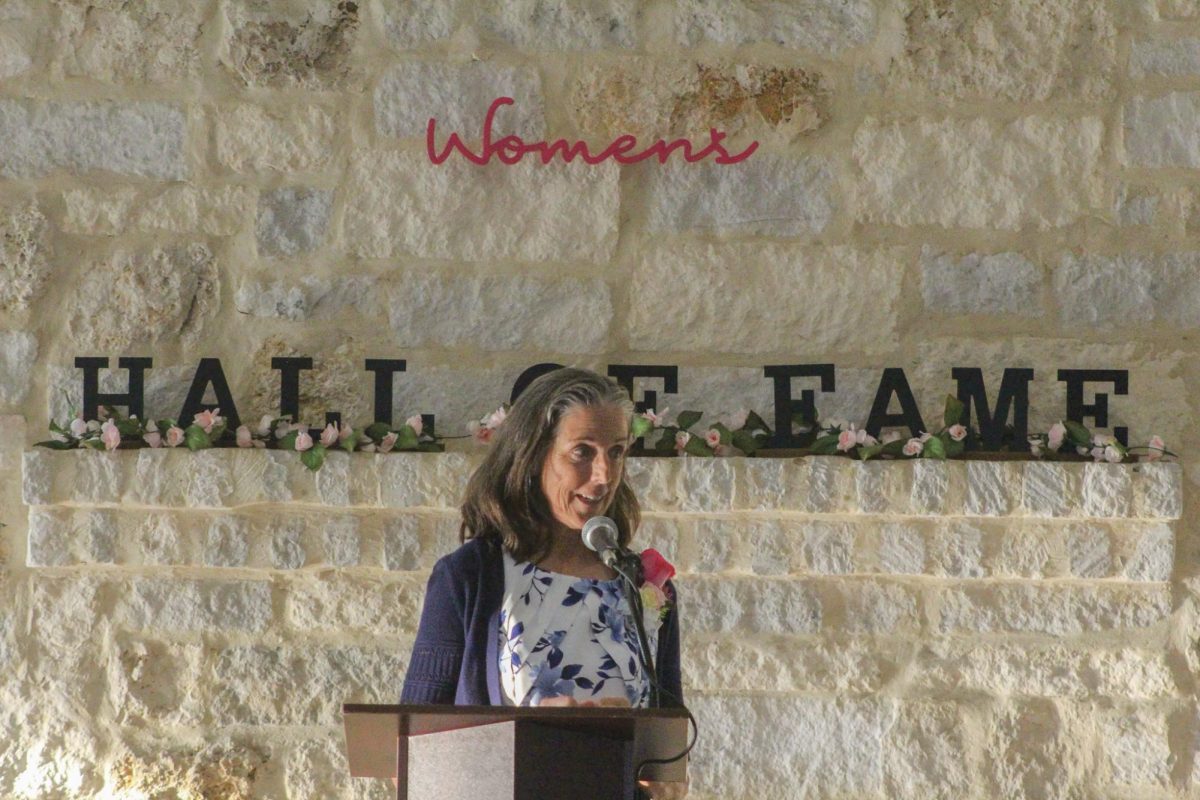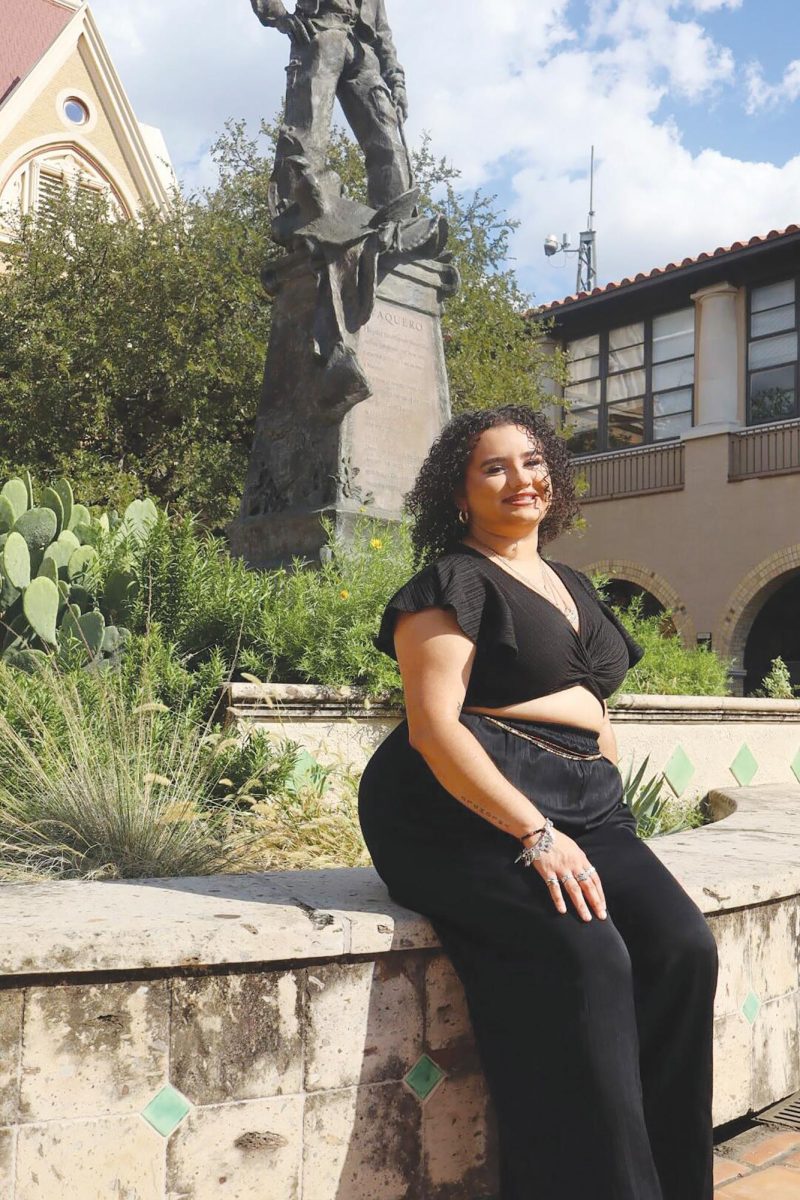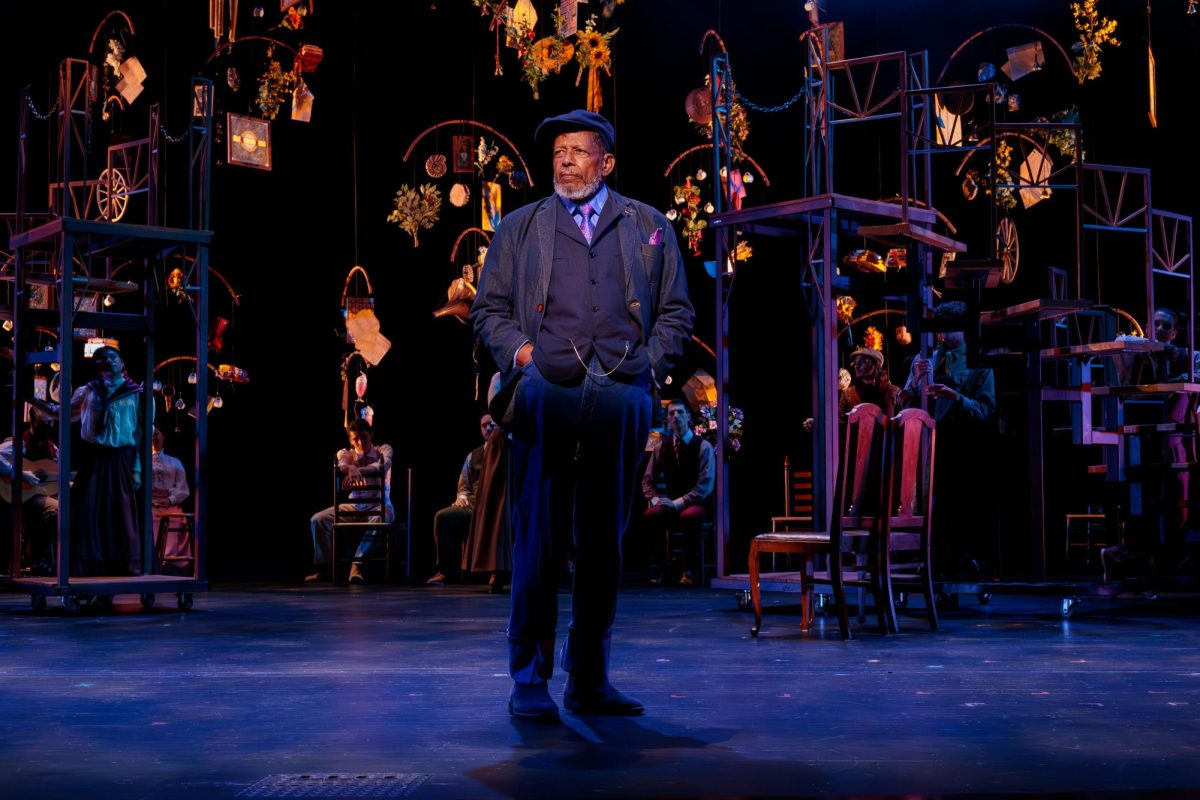While out rowing in canoes on the San Marcos River, Texas State students and their professor, Sangchul Hwang, found themselves surrounded by water hyacinth, an invasive plant species growing in abundance along the river.
The group came together with the goal of bettering the health of the environment by upcycling various invasive species.
At first glance, the hyacinth may not look like much, but these researchers have started a project that has the potential to help people upon its completion: turning the invasive species into menstrual pads.
This research is being conducted under HEDGE (Hwang Eco-friendly Development for Green Environment), a research and innovation partnership created by Hwang, an assistant professor of civil engineering at Texas State’s Ingram School of Engineering. The partnership began in 2010 during his employment at the University of Puerto Rico.
“I came to Texas State in 2020, and it was here that I was able to make partnerships with many local organizations, including the San Marcos River Foundation,” Hwang said.
The HEDGE lab at Texas State focuses on the frugal repurposing of invasive aquatic plants, intending to create value-added products such as menstrual pads.
Wren Vogel, a graduate student, joined HEDGE after being introduced to the topic of repurposing invasive species last January. She heard about the project from professors in the Family and Consumer Sciences Department, including Hwang. She has been serving on the HEDGE team ever since, researching various invasive species and how they can be upcycled.
“We connected with a local canoeing tour company, Paddle With Style, and used their canoes to go down the river,” Vogel said. “The San Marcos River Foundation has taught us how to properly remove water hyacinth to ensure that native microorganisms are kept in the river.”
After the invasive species are collected, the plants are taken back to HEDGE’s lab to begin the pad-making process. The hyacinth roots are removed, while the stem and leaves get cleaned using water. The remaining hyacinth is then dried using sunlight and industrial ovens and is then fibered in a blender with raw cotton and water, producing the prototype pad.
Many well-known brands of menstrual products contain chemicals that are harmful to the human body such as benzene and chloroform, which can cause infertility and other complications within reproductive organs. Jamie Hand, a civil-engineering senior, is an advocate for plant-based pads and the safety of the ingredients they contain.
“It is very absorbent, and it has a lot of good properties,” Hand said. “We’re taking the water hyacinth because it is prolific, especially here, and it’s all over the world. It’s easily accessible to countries that have water sources where it is growing.”
After extracting a singular water hyacinth plant, it can regenerate into a new plant in as little as two weeks. Water hyacinth is known to clean bodies of water. However, because the plant is so absorbent, it lessens the amount of water in mass quantities. Large amounts of water hyacinth can also block sunlight from reaching the bottom of the river. This causes a decrease in levels of dissolved oxygen, making it harder for organisms to survive in their natural habitat.
“Water hyacinth was brought to this area for its ornamental value,” Hand said. “In large swarms, it’s just not good for the environment.”
HEDGE aims to create a pad that is both environmentally friendly and cost-efficient. Invasive plant species are readily available and biodegradable, which is why a plant-based pad would be better for the environment.
Throughout this project, HEDGE has connected with several outside organizations, such as the San Marcos River Foundation, Plum Creek Watershed Partnership and Paddle With Style, helping HEDGE conduct its research in both the collection and laboratory processes.
“We’re very fortunate to have met a lot of people with the same common interest,” Hwang said. “It has been a good opportunity in terms of community connection. We have realized there are many people with a warm heart to save the world.”
HEDGE aims to combat “period poverty,” a term used to describe inadequate access to menstrual products upon the pad’s completion.
“If you look at a place like India, people who menstruate are typically underserved compared to here,” Vogel said. “There is a connection between people there and people here and that’s in the prevalence of water hyacinth. We want to keep it frugal and duplicable while developments made here can also be used there.”
Although the menstrual pad is still in its prototypal phase, HEDGE hopes to eventually share its final product so that those who menstruate can have an inexpensive and safe option.
“We hope to start in San Marcos and reach people who experience period poverty and don’t have the means to pay for products that are a necessity,” Hand said. “From there I hope we can spread awareness of this alternative so people may properly manage their menstruation.”
To learn more about HEDGE, visit its Facebook page.
Categories:
Students turn invasive river species into menstrual pads
Camryn Cole, Life and Arts Contributor
January 27, 2022
0
Donate to The University Star
Your donation will support the student journalists of Texas State University. Your contribution will allow us to purchase equipment and cover our annual website hosting costs.
More to Discover


